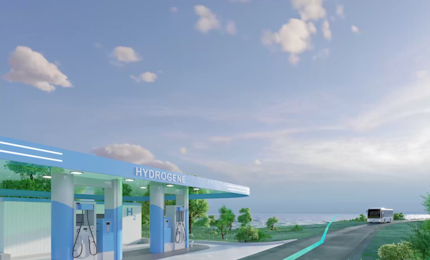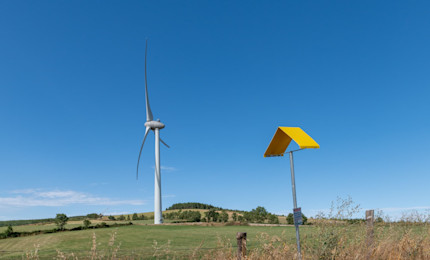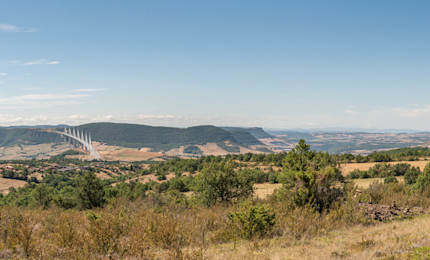Urgence gaz 0 800 028 800

Le 7 nov. 2024
H2med project is launching its Call for Interest
The H2med project is a transnational initiative between Portugal, Spain, France and Germany to interconnect the hydrogen networks from the Iberian Peninsula to Northwestern Europe. It will unlock the potential of a hydrogen economy and enable Europe to meet its decarbonisation and reindustrialisation objectives thanks to an affordable green hydrogen supply by 2030.
The H2med Corridor includes a hydrogen interconnection between Portugal and Spain, CelZa (Celorico da Beira – Zamora), with a capacity of 0.75 million tons (Mt) per year, as well as a maritime pipeline connecting Spain to France, BarMar (Barcelona – Marseille), with a 2 Mt/year capacity. Both interconnections have been included in the list of Projects of Common Interest (PCI) published on the 8th of April 2024.
The H2med Call for Interest aims to identify the needs in all the areas covered by the Corridor, in particular the national hydrogen backbones that the five project promoters aim to build by 2030:
In Portugal, where extensive wind and solar programmes have been launched, REN is planning a hydrogen
infrastructure capable of exporting 0.75 million tons per year of hydrogen via H2med.In Spain, Enagás, provisional Hydrogen Transmission Network Operator (HTNO), has received the approval by the
Council of Ministers to develop, build and operate the Spanish hydrogen backbone with 2,700 km of pipelines with
two associated storage facilities, as well as jointly developing with its partners the H2med Corridor, positioning
the Iberian Peninsula as an export hub for renewable hydrogen in Europe up to 2 million tons per year.In France,
GRTgaz is working on HY-FEN, a 1,000 km hydrogen connection project running from Marseille to
Obergailbach on the German border, identified as well in the latest PCI list. It will link the potential
hydrogen production of the Iberian Peninsula with the major consumption and storage hubs in France
and Germany, incorporating strategic storage sites along the route. HY-FEN will connect with other key
projects, also part of the latest PCI list.Teréga leads the Hydrogen Southwest corridor project (HySoW), a transmission and storage
infrastructure project of 650 km dedicated to hydrogen to decarbonise the major industrial and mobility
hubs of the Occitanie and Nouvelle-Aquitaine regions, in the Southwest of France and along the border
with Spain. HySoW will provide access to additional hydrogen volumes and give flexibility to the Corridor
through storage capacities and will connect to HyFEN through the MidHY project developed by GRTgaz.
In Germany, the project H2med will also interconnect with OGE’s H₂ercules project, which is part of the German
hydrogen core grid consisting of about 9,000 km, connecting all the country’s major demand centres. H₂ercules is
a 2,000km network of pipelines that will supply consumers mainly in southern and western Germany with
hydrogen from various sources: produced in the country and imported, notably via H2med.
On the 22nd of October Enagás, GRTgaz, REN, OGE and Teréga submitted their applications to the Connecting Europe Facility (CEF) funding to carry out studies for their H2med Corridor’s both PCI. The applications are backed by letters of support from the governments of Portugal, Spain, France and Germany.
The Call for Interest has been presented today in Madrid through a dedicated webinar with representatives of the five
European TSOs involved in the project. Project promoters from each participating company provided further context of the process, detailing its main objectives and the technical steps for participation.
Interested stakeholders are invited to take part in this process by submitting their applications via the H2Digital platform accessible through the H2medproject.com website until the 18th of December. At the end of this Call for Interest, the results will be presented to the stakeholders.
The EU's ambitions to support the development of a hydrogen market
The commitments made in the REPower EU framework - which aims for 10 Mt of domestically produced green hydrogen and 10 Mt from imports - and the more recent Net Zero Industry Act underscore the hydrogen role as a crucial vector in the decarbonisation and reindustrialisation of the EU. It is now necessary to develop the associated infrastructures within the EU, which is the aim of CelZa and BarMar. Their designation as PCI projects illustrates their significant contribution at the European level in terms of sustainability, market integration, security of supply, and competitiveness.
This Corridor linking Southern and Northwestern Europe results from joint efforts by four European countries, supported by private and public commitments. It reflects the strategic importance and privileged position of Southern Europe in terms of competitive hydrogen production.
The development of the Corridor will cover the entire hydrogen value chain, enhancing the economic competitiveness of all industrial users. Furthermore, it will enable carbon saving in all industrial functions, creating a viable development ecosystem for new industries and reindustrialisation. Ultimately, H2med will position clean hydrogen at the heart of the future energy system.

The Sherpas of the H2med Corridor (from left to right): Natalia Latorre, Energy Transition General Manager (Enagás), Nicolai Raß, Head of Business Development Hydrogen International (OGE), Pedro Furtado, Head of Studies and Regulation (REN), Marie-Claire Aoun, Director of Strategy and Institutional Relations (Teréga) & Jean-Marc Brimont, Head of International Business Development (GRTgaz). Photographer: Rafeal Martin.
À lire aussi

Discover the “Hydrogen Objective” platform
This interactive site aims to provide an in-depth and accessible understanding of hydrogen as an efficient solution for the reindustrialisation of regions and the decarbonisation of industry and mobility.

Hydrogen transport: how is Teréga getting its grid ready?

The challenges of developing the hydrogen industry in Europe





